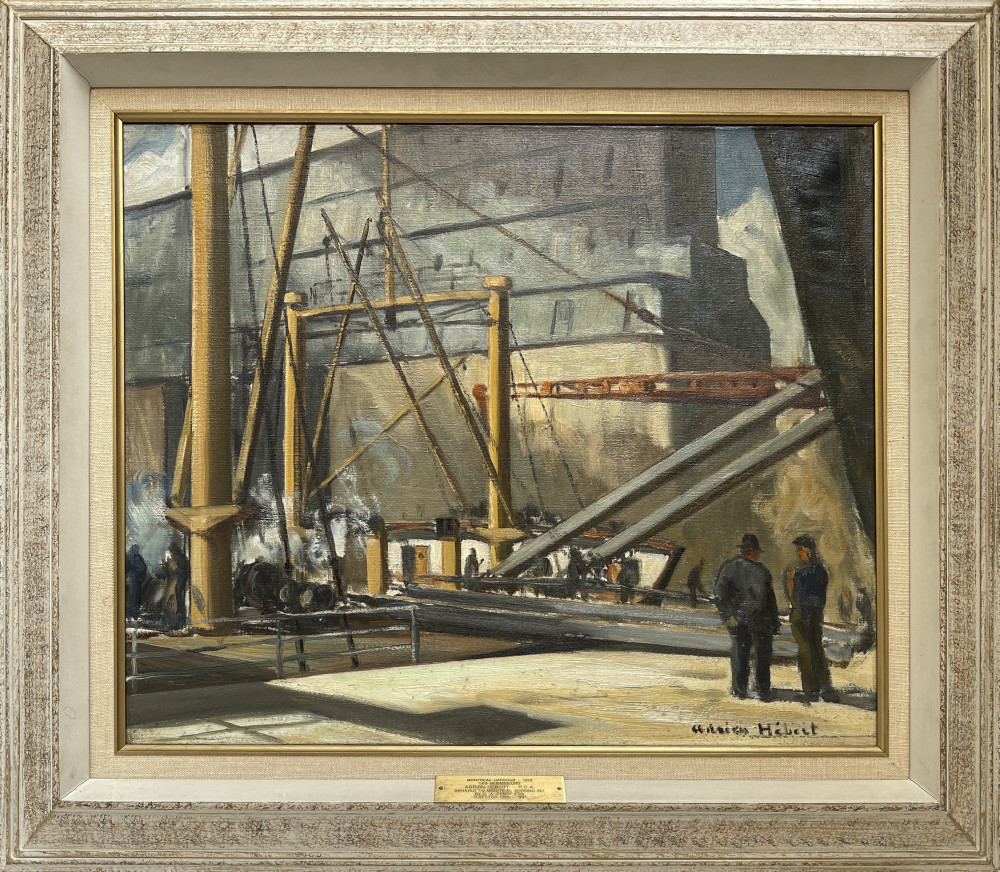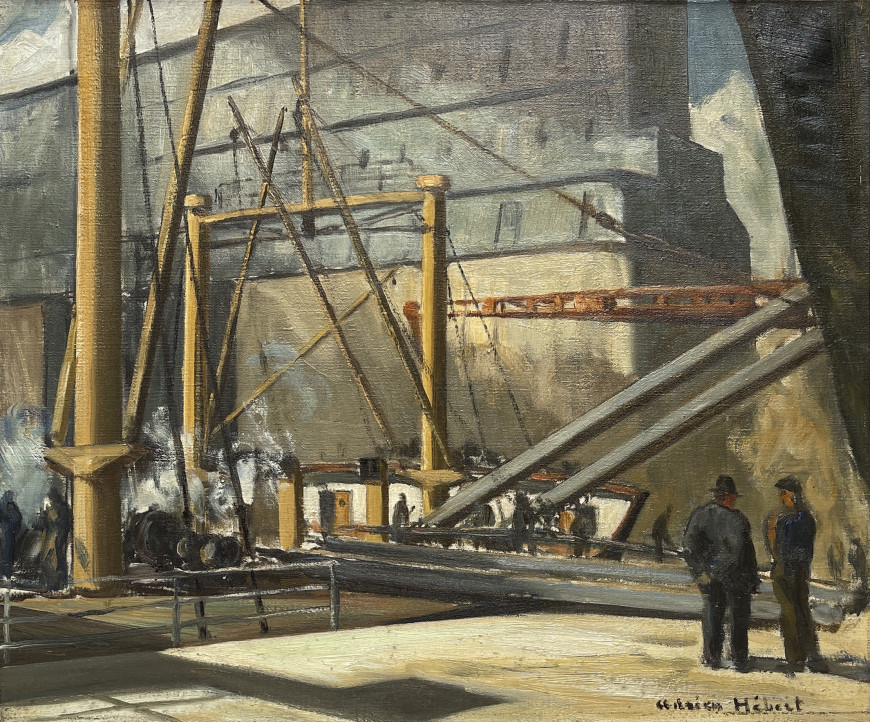-
Artworks
Adrien HébertMontreal Harbour (Les débardeurs), 19261890-1967Oil on canvas20 x 24 in
50.8 x 61 cmSoldInscriptions
signed, ‘Adrien Hebert’ (lower right)Provenance
Walter Klinkhoff Gallery Inc., Montreal;
Montreal Shipping (acquired from the above);
Douglas A. Short, director of Montreal Shipping from 1955-1990, Montreal (retirement gift from the above);
Donated to Montreal Shipping Inc. by Douglas A. Short.
Exhibitions
Montreal, Montreal Museum of Fine Arts, 2ème exposition “ Montréal, ville portuaire” 1860-1964, 6 Juin au 28 Juin, 1964 (2nd exhibition "Montreal, Harbour City" 1860-1964, June 6 to June 28, 1964);
Montreal, Galerie Walter Klinkhoff Inc., Hommage À Adrien Hébert, R.C.A. (1890-1987), September 1984, as no. 12Many of Adrien Hébert’s most sought after paintings are his compositions of the port of Montreal, painted in the 1920s. On Hébert’s works that depict the port as their subject, scholar Esther Trépanier wrote:
“When he first began depicting the port, it had been just acclaimed the fourth year running as the world’s largest exporter of grain. [...] The port of Montreal, with its connection to a vast railway network, had become Canada’s main transport hub, rivalling America’s greatest Atlantic ports. Like the huge steel-hulled transatlantic liners and gleaming locomotives that actually carried the goods, the port, whose grain elevators had been enthusiastically hailed by Walter Gropius (1913) and Le Corbusier (1923), was, at the time that Hébert made it one of his main subjects, the quintessential symbol of Quebec’s economic, architectural and industrial modernity [1].”
The perspectives employed in many of Hébert’s paintings of the port, including this one, have a theatrical quality, and serve to dramatize or “monumentalize” [2] the industrial features. In "Montreal Harbour (Les débardeurs)", circa 1926, stevedores (débardeurs) go about their work, dwarfed by the massive grain elevator. Looming above the two figures on the right is an imposing black mass, conceivably the bow of a ship. The composition is animated, symbolizing the importance and vitality of the port.
Like many of the Beaver Hall Group artists, Hébert was primarily an urban painter. Esther Trépanier concludes that his compositions demonstrate a harmonious view of commercial and industrial progress in the modern city [3]. In reviewing a number of his urban paintings, we find it difficult to ignore the suggestion of social realism. His human subjects, and their settings, often seem to imply an interest in their condition. In some paintings, such as "Lafontaine Park" (sold by Walter Klinkhoff Gallery), urban dwellers are at play. In others, such as "Montreal Harbour (Les débardeurs)", circa 1926, they are at work, and intentionally overshadowed by the built structures against which they are set.
In the 1920s, the large grain elevators supported the aforementioned demands on the port of Montreal. Comparisons with old photographs in the McCord Museum suggest that the elevator depicted in "Montreal Harbour (Les débardeurs)", circa 1926, was likely one that belonged to the Canadian Pacific Railway.
In 1926, around the time Hébert painted these stevedores at work, Montreal was the largest grain port in North America. “Montreal at that time was exporting 135 million bushels of grain, exceeding by a large margin the 75 million bushels exported by New York, which explains why silos with such large capacities were built, the first one in 1904 and the last one in 1982 [4].”
One month after Hébert’s death, Mayor Jean Drapeau presented one of his paintings of the port of Montreal to General Charles de Gaulle on the occasion of the latter's visit to Expo 67.
_________________________________
Footnotes
1. Esther Trépanier, “The Modern City: Adrien Hébert”, "1920s Modernism in Montreal: The Beaver Hall Group", (Montreal: Montreal Museum of Fine Arts, 2015), p. 20
2. Ibid., p. 214
3. Ibid., p. 218
4. “Timeline and Detailed History” Montreal Port Authority (https://www.port-montreal.com/en/the-port-of-montreal/about-the-port/the-port-of-montreal-through-history/timeline)1of 2













